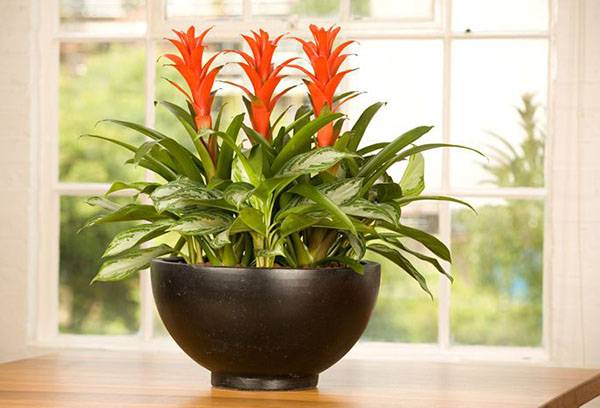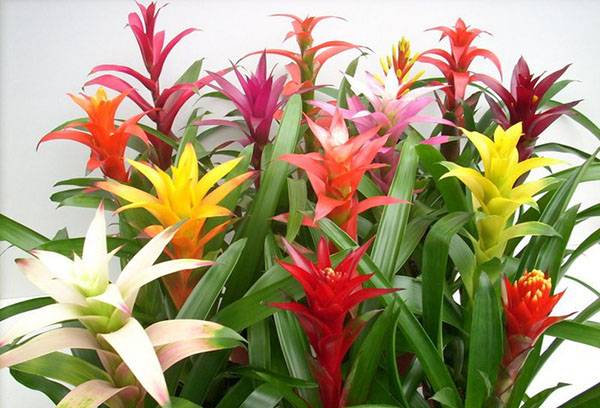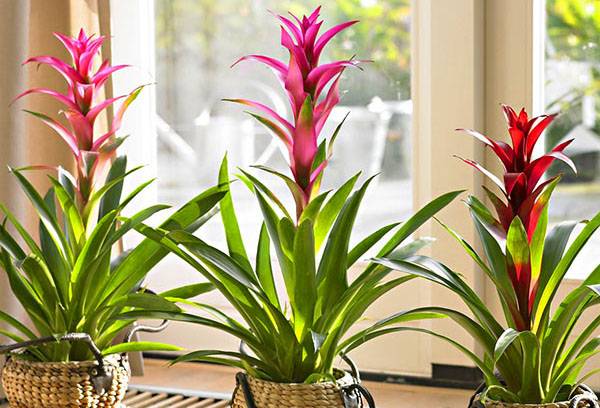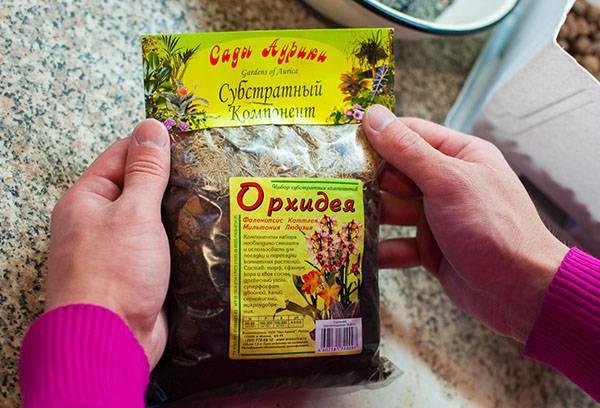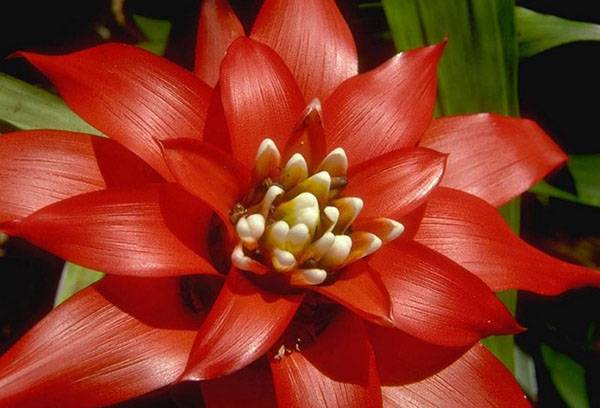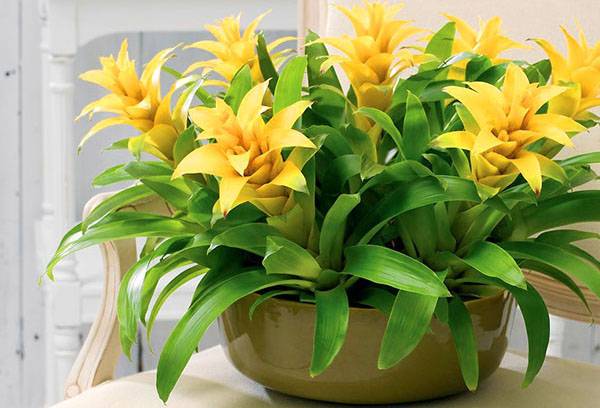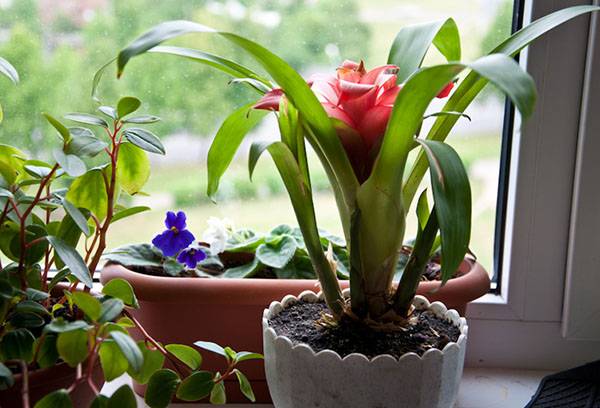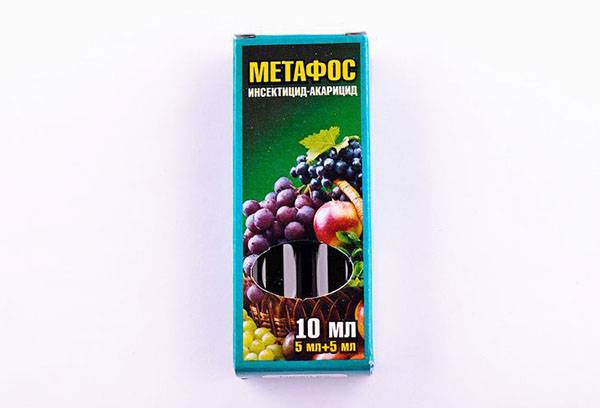Types of guzmania and home care
Content:
Plants that came to us from the thick of impenetrable rainforests always attract with their mystery and exotic beauty. Guzmania (or bromeliad), whose homeland is the rain forests of India, Central and South America, is no exception. The Spanish traveler and naturalist Anastasio Guzman was so captivated by the unusual plant that he brought several species with him to Europe. Tropical bright butterflies scattered flowers around the world. And although caring for guzmania at home is not too simple, amateur gardeners often purchase it to replenish their collections.
What is a plant?
Rainforests are so impassable and dense that they do not allow sunlight to penetrate the soil. Therefore, the squat plants living in the lower tier are drawn to the light, using tall trunks and branches of adjacent trees. Those specimens that adapt to life with the help of their "brothers" are called epiphytes. This is exactly what our familiar, evergreen guzmania, belonging to the Bromeliad family of, is.
- Her roots are weak, as they are adapted for growth on the trunks and branches of trees, and not in the ground. With their help, guzmania can even move around the trunk in search of the most favorable location. Often, a flower can also be found on mountain slopes with its roots caught in cracks in the rocks.
- Guzmania does not have a stalk.
- Long and narrow, but very dense leaves, reminiscent of belts, are collected in a socket with a wide hole, inside of which moisture collects. Savvy tropical birds use this feature as a forest drinker. Together with water, the plant receives fertilizers in the form of organic residues trapped in the funnel.
- In the center of the rosette appears a peduncle with smaller leaves. And on its top a large bract blooms, the yellow, red and orange leaves of which many mistakenly mistaken for a flower.
- Wise nature specially created the bract to be bright in order to attract insects for pollination, since the real flowers of guzmania are small and inconspicuous.
The height of the plant in nature reaches 75 centimeters, and at home does not exceed 45 centimeters - a lack of moisture and heat affects.
Tip
The flowering of guzmania is quite long - about two months. Be prepared for the fact that after its completion, the annual plant, unfortunately, will die.
The most common types
Thanks to the work of breeders, many decorative, hybrid varieties, differing in size, leaf shape, color of the bract and the duration of flowering, have been added to the variety of species of exotic plants created by nature.
The following varieties of guzmania are considered the most popular for growing a house.
- Minor (or Rondo) - this flower is more often than others can be found on the windowsills of amateur gardeners, since the variety has a special flowering time - from February to August. Leaves - saturated green, may be striped. Stipules ranging from pale red to bright orange.
- "Mosaic" - pleases fans with incredible petals of saturated pink color. Striped dense leaves are collected in a wide outlet.
- "Reed" - got its name thanks to long, up to half a meter, green leaves with a brown stripe. The upper leaves of the peduncle are red or orange, the flowers are white.
- "One-lane" - the inflorescence really looks like a long spike of white flowers with reddish veins. The leaves of this variety are distinguished by an unusual yellow-green color.
- "Nicaraguan." Its distinctive feature is pointed scaly leaves and a red-brown bract. Flowers are not white, as is often the case, but a yellow-orange color.
- Ostara - artificially bred variety with a very long, up to six months, flowering period.
Tip
Often in flower shops incompetent sellers offer for sale the so-called “Mix” variety. It is important to know that the word “mix” does not mean a separate variety of guzmania, but the whole variety of colors inherent in this plant.
Breeding
After flowering, guzmania gives fruits, inside of which there are seeds. But they are practically not used for plant propagation due to poor germination, the complexity of the process and the difficulties of care. For this purpose, shoots are most often used, or, as they are also called, children who appear in abundance on the mother plant after flowering.
How does this happen?
- The young shoot is cut with a previously disinfected knife (this can be done after the appearance of his own roots).
- Place the sections sprinkled with crushed activated carbon, ash or chalk.
- The separated shoots are placed in a pot filled with a mixture of peat and sand (1: 1), and covered with a film, creating greenhouse conditions.
- Open the film daily and air the plant for 5-10 minutes while spraying it with warm water.
- After the first new leaves appear, the film is removed. The fourth leaflet is a signal that it is time for guzmania to be transplanted into a separate pot.
Tip
Guzmania can be propagated without cutting young shoots from the mother bush. It is enough to wait a while for the children to take root and gain a foothold in the old pot. After that, the mother outlet will need to be removed.
Transfer
A transplant of room guzmania is required only in two cases: after buying a flower and when propagating. Old plants should not be transplanted, as they, as already mentioned, are annuals and die soon after flowering.
Guzmania is an exotic plant, and the usual universal soil is not suitable for it. Melange should be used, which in its composition is close to the bark of trees on which a tropical beauty grows in the wild. These are, as a rule, components taken in equal parts:
- sphagnum moss;
- sand;
- turf land;
- peat;
- pieces of wood conifers.
Tip
For transplanting guzmania, ready-made soil intended for orchids or bromeliads is quite suitable.
The pot should be chosen wide and shallow, as the root system of the plant is not sufficiently developed.
When replacing guzmania, proceed as follows.
- Put drainage on the bottom of the pot, which will protect the soil from excessive moisture accumulation.
- Sprinkle a thin layer of coal on top to protect against putrefactive processes.
- Now you can fill the ground with a small slide.
- Put the plant in a pot, carefully spreading the fragile roots.
- Add earth to the neck of the root outlet.
- Lightly tap the pot on a hard surface so that the ground settles and spread evenly over the pot.
- If necessary, add a little more earth without blocking the neck of the flower.
You can not ram the soil with your hands - there is a risk of damaging the roots, in addition, the earth should remain loose and fluffy for better oxygenation.
Tip
purityis.decorexpro.com/en/ magazine warns: the juice of the plant is not poisonous, but contains special substances that, if it comes into contact with the skin or mucous membranes, cause irritation and redness. Therefore, it is best to deal with the plant in protective gloves.
Interestingly, to grow guzmania, instead of a flower pot, you can use driftwood, simulating the natural habitat.For this purpose, you need to take an adult plant, wrap its roots with wet moss and attach it to the tree bark with wire. To prevent the plant from dying, it is important to constantly fill the outlet with water and spray the roots with nutritious dressing for epiphytic plants.
Conditions of detention
What do we know about the climatic features of tropical forests? First of all, this is high air temperature combined with almost 100% air humidity and the inability to penetrate direct sunlight due to lush vegetation. In an apartment, it is desirable to bring the conditions of exotics as close to natural as possible.
The following conditions are best suited for guzmania.
- Slightly shaded place in a bright room facing the east or west side, but without direct sunlight - they cause burns on the leaves of the plant.
- Additional lighting with a special lamp in the short light days of the autumn or winter period.
- Air temperature 23–250 C in the spring-summer flowering period and not lower than 160 With in the winter.
- Fresh air (provided there are no fatal drafts).
Humidity comfortable for guzmania - 80%. Such conditions can be achieved by placing wide containers of water near the plant and daily spraying leaves from the spray bottle.
Tip
Wet sphagnum, expanded clay or pebbles laid around a flower pot, as well as the use of special devices will help maintain the necessary humidity.
Watering and feeding
The well-being of tropical guzmania is largely dependent on proper watering. And this is a whole science with its own specific features, subtleties and tricks.
- From March to October, guzmania is actively growing and blooming. At this time, the plant needs a lot of moisture, so water it every other day. The method of irrigation is not quite ordinary: water is not poured onto the ground, but into the very center of the outlet formed by leaves, because this is what happens in nature.
- When watering, water accumulates inside the outlet. It is important to ensure that its level does not exceed 2.5 centimeters, otherwise the plant will rot. Surplus is worth draining.
- So that the water does not stagnate in the outlet, it is recommended to change it once a month. And at the end of autumn, before the rest period, they merge completely.
- In winter, watering should become less intense. Moreover, water is now poured not into the center of the outlet, but directly into the soil as it dries.
- If the air temperature is less than 20°C, it is worth doing only daily spraying so as not to provoke rotting of the roots of the plant.
- Guzmania growing on a snag is removed every 10 days from the base and lowered for a few minutes in settled water to saturate it with water.
- It is advisable to water this indoor plant in the morning.
Tip
To make the leaves shine, just wipe them with a damp cloth and remove the dust. Remember, the use of wax for guzmania leaves is not recommended.
During the period of active growth, the plant should be fed twice a month.
- Foliar fertilizers for the Bromelievs are best suited.
- You can use universal dressings for exotic plants, but make the solution less concentrated than indicated in the instructions.
- Fertilizers containing boron, copper, superphosphates, calcium nitrate, a large amount of nitrogen, cow manure, are harmful to the tropical beauty.
An aqueous solution of a suitable fertilizer is sprayed on the leaves or poured into a root outlet.
Most common problems
Bright guzmania usually becomes a favorite plant in the home collection, so any growth problems very upset gardeners and cause a lot of questions.
- Why do leaves turn yellow? The cause may be the death of the root system due to waterlogging of the soil, an excessive amount of fertilizer or a banal lack of sunlight (but not direct sunlight!).
- What is the reason for the cessation of growth? This happens when the plant has reached its limit and is preparing for flowering, or with insufficient nutrition.
- Why do the leaves fade? The reason - in the wrong watering, stagnation of water in the root outlet, exposure to sunlight or pests.
- What to do if guzmania has faded and the children have not appeared? It is worth cutting the peduncle - most likely, seed maturation inhibits the growth of new processes.
- Why does guzmania not bloom? Perhaps the plant lacks light, moisture, or nutrients.
Tip
The flowering process can be accelerated by putting several apples next to the pot and covering them with the flower film for 3-4 days. Ethylene gas released from fruits stimulates the growth of flowers.
How to deal with pests
Tropical guzmania is quite resistant to adverse environmental conditions, but is exposed to some insect pests. The most dangerous are the following types.
- Mealybugd - fairly large (up to 6 mm) insects that suck juice from young shoots, leaves or flowers. Allocate a white wax secret, reminiscent of flour dust or cotton wool. If you notice such a plaque on the leaves - hurry to clean the plant from the pest. To do this, wipe the leaves with a soap solution or spray with an insecticide (Biotlin and Confidor are suitable) according to the instructions.
- Shields - small insects covered with a wax shell. They feed on the juice of the plant, sticking tightly to it. In the process of life, these pests secrete a clear, sticky liquid, due to which the leaves become shiny, as if covered with sugar syrup. They struggle with scabies with the help of insecticides "Aktara", "Metaphos" or folk remedies: with the help of garlic, tobacco or soap solutions. They need to spray the plant, first manually removing insects.
In response to the careful attitude and gentle care, the plant will give you not only its beauty, but also clean air in the room (due to its ability to reduce the content of harmful impurities), vitality, peace and tranquility.
Read the article: midges in orchids
